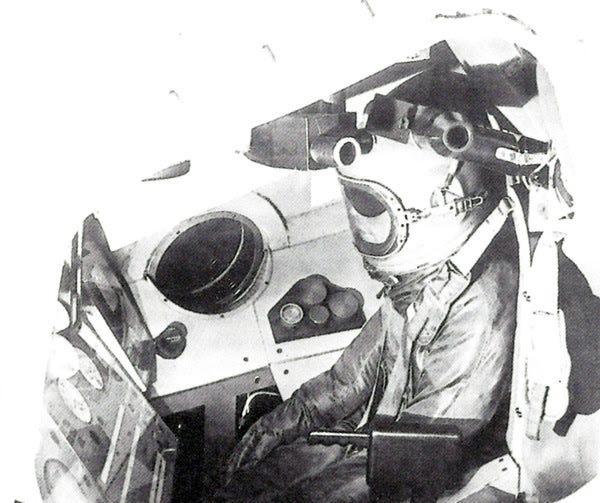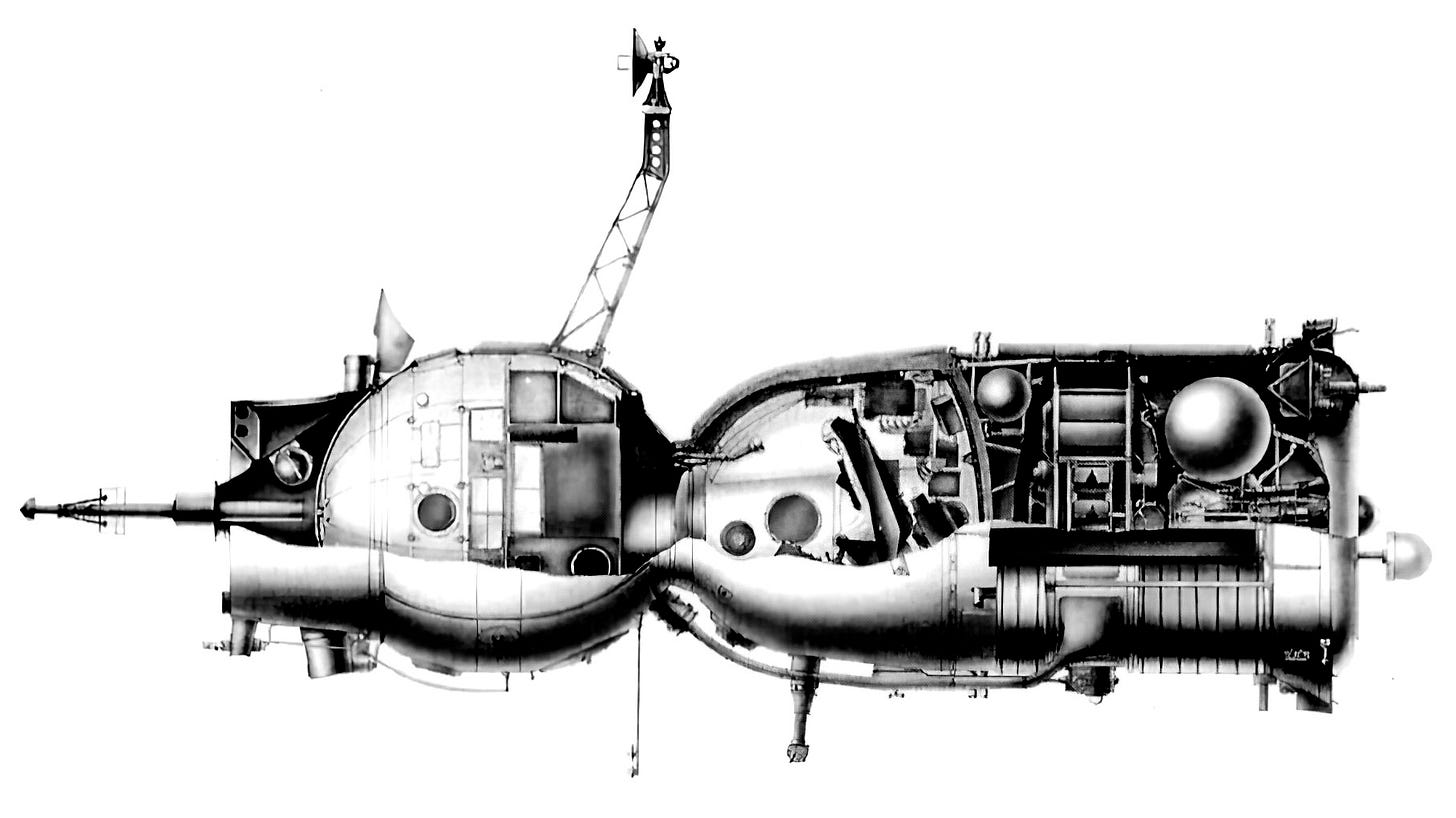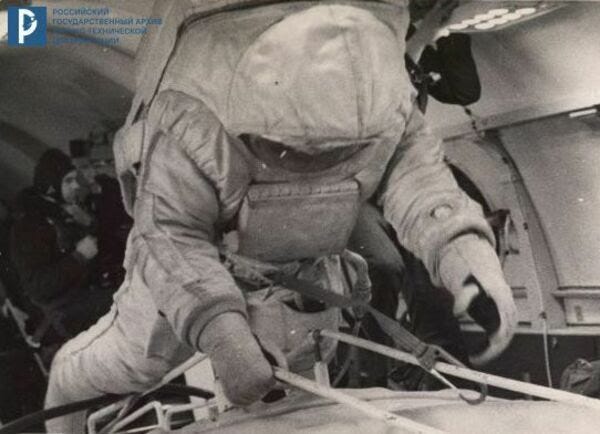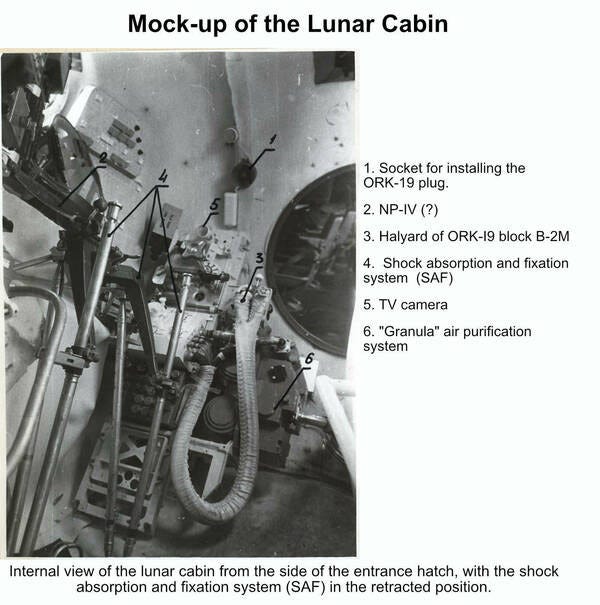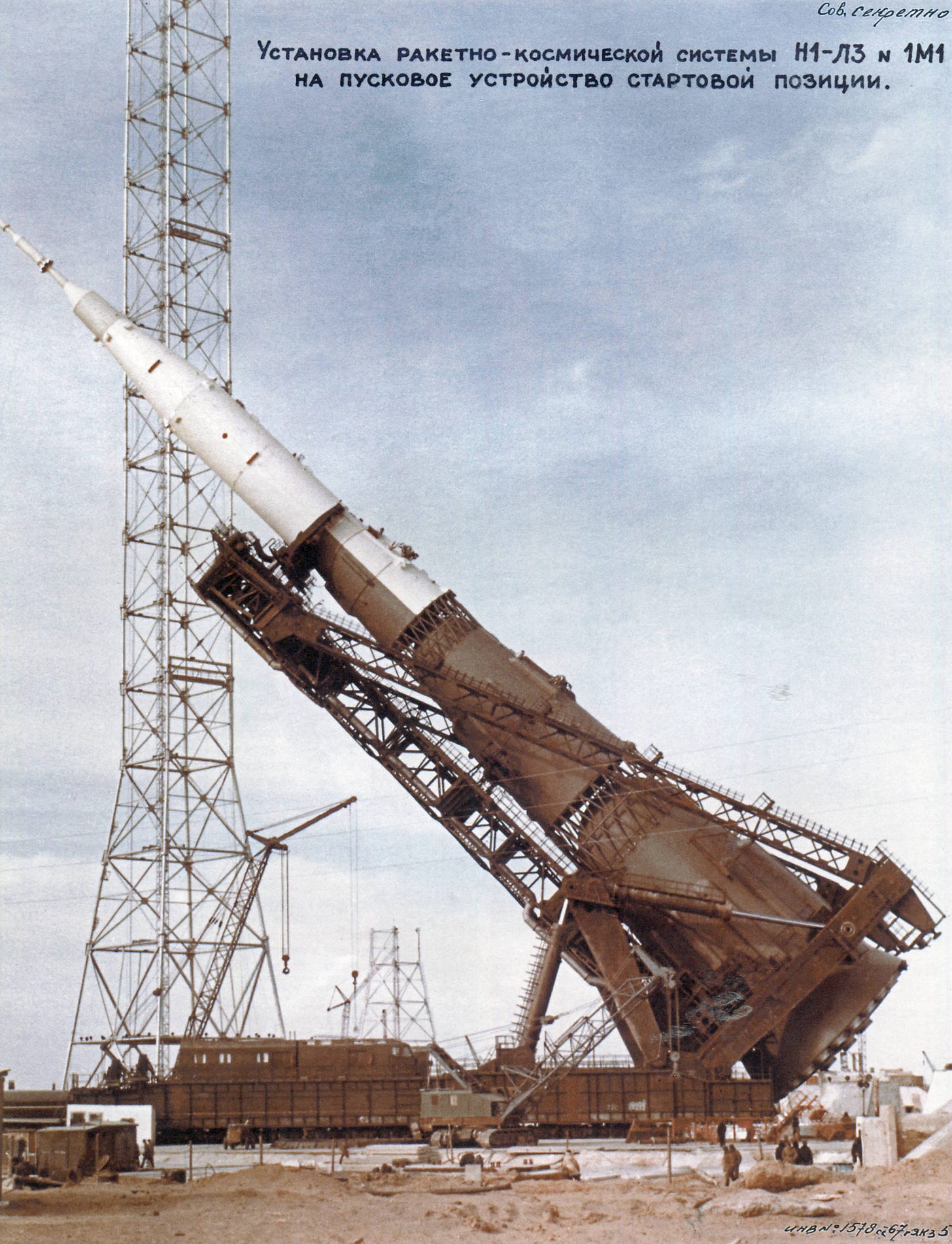Soviet Space - Nuggets!
Cool bits and pieces, lots of small stuff.
Hello! This time around I’m gathering up a mix of small items, rather than a large article. Some of these were previously published when the newsletter ran under “Revue”, but as this newsletter now has much larger circulation than that ever did, most of you will find it new material. Lots of photos and illustrations this time around!
LK-1 cockpit with dummy pilot:
This seldom seen photo shows the cockpit of Chelomey’s LK-1 “round the Moon” spacecraft design, complete with a dummy pilot.
And the colour illustration is a diagram of the LK-1 key systems, (no captions in English yet).
View from inside LK mock-up:
Here’s a rather nice photo from inside an early mock-up of the LK Lander, showing V Bugrov practicing entry.
Soyuz 7K-0K
Here’s the nicest illustration I have seen of the 7K-0K era Soyuz. I have used AI enlargement to make it bigger, as usual click for the full size version.
LK Lander on a plane?
As you can see in the photograph above, cosmonauts were trained in actual Lunar gravity, using the same system of parabolic flights that provided zero G training. This photo declassified by RGANTD.
Here’s another photo of the low gravity training, showing a cosmonaut in a Krechet spacesuit.
Spacewalk trials during parabolic flights
Tests were also made early on in the program, on how practical it was to spacewalk between craft, and enter them in zero gravity. Several mission schemes proposed had the main lunar vehicle launched on a rocket that was NOT crew-rated, and the cosmonauts would rendezvous in orbit, launching on a Soyuz.
RGANTD declassified images.
This proved difficult in practice, and one of the wilder suggestions was to move the spacesuit backpack, and mount it on the cosmonauts legs!
LK Mockup, with control captions.
Computer translation has been used, but I think the results are informative.
Looking towards the open LK Hatch. Computer translation, but it seems to have worked well.
And another photo, this time looking into the LK from near the hatch. Both photos declassified by RGANTD.
Advanced crewed Lunokhod
This was part of the Lunar Expeditionary Program. Diagram key, and statistics:
1. Attachments
2. Control post
3. Hermetic cabin
4. Airlock
5. Solar battery
6. Drilling rig
7. Cargo area
8. Self-propelled chassis
The main characteristics of the lunar rover :
Crew: 2
Weight, 8.2 tonnes, including:
Mass of consumables per expedition per expedition, 0.2 tonnes
Mass of power plant, 2.25 tonnes
Duration of one expedition: Up to 12 days
Power plant capacity (nominal): 8kW
Maximum distance from the lunar complex, 200 km
Average speed: 5 km/h
Volume of the hermetic compartment: 25 m3
Dimensions, metres: Height 3.5 m Width 4.5m Length 8.0m
Expeditionary Advanced LK Moon Lander:
This model of the advanced expeditionary lander was photographed at the Kirov museum.
Two man version of the LK Lander
The actual cabin looks to be the same size, and severely cramped. Note that the base unit has been stretched a lot, presumably for extra fuel.
This edition’s cool link:
The “Podsadka” proposal as an alternative way to send a cosmonaut around the Moon, via Astronautix.
http://www.astronautix.com/p/podsadka-fainthemoonrace.html
This editions cool image:
This shot of the N1-3L weight model going up is not that rare, but if you click on it, you will find this version is VERY high resolution.
That’s all folks!
Nick



